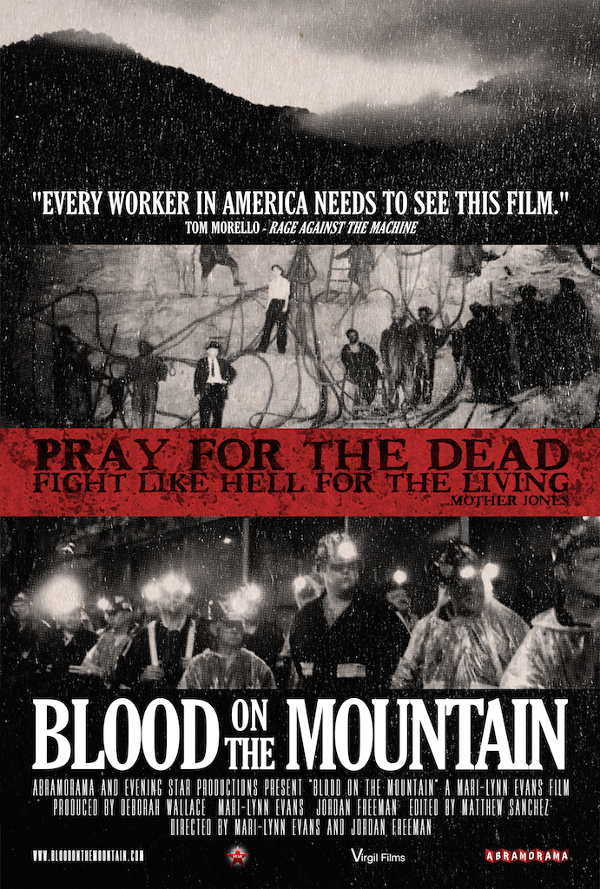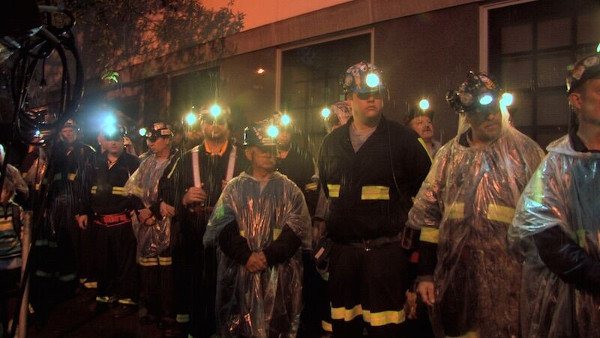
“Our union blood is on that mountain.”
Those words were spoken at a contentious hearing in West Virginia to decide the fate of Blair Mountain, the scene of the bloodiest battle in U.S. labor history.
In 1921, some 10,000 miners fought a nine-day war on that mountain, battling thousands of company thugs, the state police, and—ultimately—the U.S. Army. Scores died. Over 1 million rounds of ammunition were fired.
Now, the energy industry wants to blast the top of Blair Mountain to find underlying coal seams. This practice is known as “mountaintop removal.” It has serious environment and health consequences.
A stunning film released late last year graphically depicts the intense debate over mountaintop removal, including the moves to blast Blair Mountain. It also brilliantly recounts West Virginia’s past and the debate over its future.
“Blood on the Mountain” is a 93-minute documentary directed by Mari-Lynn Evans and Jordan Freeman. It uses recent aerial photography and grainy old newsreel footage to convey both the breathtaking beauty of the Appalachian mountain range and the long, bitter struggle for economic and environmental justice there.

The film’s interviews are as impressive as its imagery. We meet Chuck Nelson, who worked for 29 years in a union mine and then had to deal with the brutal practices of the anti-union Massey Energy Company. We watch as Maria Gunnoe drives the back roads, distributing jugs of water after a chemical spill contaminated the water in nine West Virginia counties in 2014. We hear the anguish in her voice as she describes how difficult it is to decide who needs her limited supply the most.
Historians and retired miners talk on camera. Both groups agree: Today, more coal is being mined with fewer and fewer workers. Automation and mechanization are taking over the industry. The United Mine Workers of America—once a powerful force with 500,000 members—now has only 14,000 members actually working in the mines. As mechanization increases and the old coal seams run out, it’s cheaper to destroy a mountaintop than to dig for coal underneath it.
The last section of the film contains graphic scenes of ugly confrontations over mountaintop removal between some environmental activists and those working in the coal industry. The film shows how these conflicts have been spurred on by an expensive public relations campaign financed by an energy industry which has no compunction about blasting Blair Mountain despite its proud history.
Hopefully, this film will provoke viewers to do some hard thinking about tough questions: Why are guaranteeing jobs and protecting the environment always posed against each other by the powerful? Can’t we save both West Virginia’s environment and give its people work? After seeing this film’s stark depiction of how the capitalists of West Virginia systematically destroyed so many lives and so much natural beauty, the viewer may be tempted to conclude: Only with an entirely new system.
“Blood on the Mountain” is available for viewing on Amazon and NetFlix.
Chris Mahin is a writer, speaker and teacher on contemporary U.S. politics and history, particularly on the significance of the American Revolutionary War and Civil war eras for today. He is the Electoral Desk on the People’s Tribune Editorial Board.
